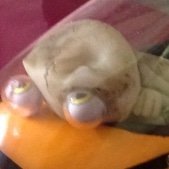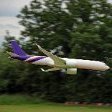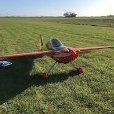All Activity
- Past hour
-
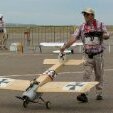
Forum members' new models: Let's see them.
Paul De Tourtoulon replied to Paul Marsh's topic in All Things Model Flying
Can't handle a broom ? - Today
-
Couple of dozen noise complaints, a noise meter might help.
-
Forum members' new models: Let's see them.
Learner replied to Paul Marsh's topic in All Things Model Flying
And you wonder why the kids don't join clubs!! -
Cheers for the quick reply and info Simon will look into ordering a few bits and try to get some 3d printed parts sorted to make it a powered Fx707s . Thanks again mate 👍
-
The LE 2204 has a 3 mm shaft. The folding prop comes from Ebay via China so you have to wait. The 5x3 I used with a 3s no longer seems available. This 6x3 folder & spinner for a 3mm shaft is about the cheapest at the moment. I use it with a 2s. May sound a bit expensive and ideally the motor cowl has to match the spinner but provided you "no power" land the prop will not get broken.
-
It's up to you. I did Eric a set and he can let you know how well they work. It does involve removing the skin between the ribs and after fitting the inserts packing out the space to fill back to flush with the wing skin.
-
Paul, My Spit is getting readied for its maiden soon and has the standard setup. Would it be worth it to do an upgrade first on the undercarriage?
-
Forum members' new models: Let's see them.
GrumpyGnome replied to Paul Marsh's topic in All Things Model Flying
To be fair, most of the bigger ones seem to have better noise-reduction than the smaller ones that typically just have the factory supplied noise-diverters. The almost constant blipping of the throttle on 3D craft doesn't help I suppose... -
Well David, there is . Basically the wheel rake forward needs to be more dramatic . If your retract mounts have been repaired a few times and a bit scruffy , you may want to do a bit of open heart surgery . Paul and Eric have both fitted Pauls 3D printed mount which fits between the existing ribs . It is quite sophisticated but does automatically mean that the angles are spot on . They also use a rubber pad to reduce shock on hard ground . The new foam veneer wing I am flying has a wooden version of Pauls mount sunk into the wing . Paul does provide the undercarriage mounts to those that request them .
-
Another quick question, regarding the LE 2204 1800kv motors, what size is the motor shaft and what adapters, folding props ect are you using. Thinking of using a 2s or 3s 800mAh (I have a few 2s and 3s around the same mAh). Thanks in advance Stu
-

Forum members' new models: Let's see them.
Paul De Tourtoulon replied to Paul Marsh's topic in All Things Model Flying
Like me, those 15-year-olds sweeping the dust from the runway with a flapping rudder, absolutely useless, no better than a pensioner with a broom. -
When the World Jet Maters were held at Swartkops in South Africa I did some demo flying with the Harvard. The competitors found out that the air is thinner at altitude and the take off runs were much longer as the take off speed was higher. One of the Scottish team members, Lindsey Dickie was having a problem getting his jet off the ground and decided it would be a good idea to replace his wheels as they were well used! He tried to get new wheels at the local hobby shops but could not locate any suitable replacements. Whilst wondering around the hanger trying to figure out a plan he saw my Harvard and noticed it had the same 4" William Brother wheels. He asked if we could swap the tires as the hubs are bolted together and I agreed so my poor Harvard spent the rest of its life with the most worn tires ever fitted to a Midwest AT6!.
-
Forum members' new models: Let's see them.
Philip Lewis 3 replied to Paul Marsh's topic in All Things Model Flying
Totally agree with that, even other pilots get really irritated by it. -

Forum members' new models: Let's see them.
Ron Gray replied to Paul Marsh's topic in All Things Model Flying
Petrol 2 strokes and 3D flying, not a good combo. -
Is there any way of "fixing" the original built up wing to help prevent nose-overs? My spitfire really has that tendency and I would love to make it a bit friendlier for taxiing and take-off!
-
SC 52 Four stroke £100 to include P&P.........SOLD.
Richard Acland replied to Richard Acland's topic in FOR SALE
This engine now sold- 1 reply
-
- 1
-

-

Forum members' new models: Let's see them.
Paul De Tourtoulon replied to Paul Marsh's topic in All Things Model Flying
YES, but people have become less tolerant !, the smoke from a BBQ, a bit of music friday night, a British flag being waved and all this woke stuff.🤢 -
May 2025 RCM&E format and print change
David perry 1 replied to leccyflyer's topic in RCM&E Magazine
Im not complaining. I don’t think this thread is a complaint. If anything its a sympathetic airing of potential causes for the observable change. I think RCME is a great mag with a superb team. All power to there elbow. I have in the past written for and been published in RCME -
May 2025 RCM&E format and print change
David perry 1 replied to leccyflyer's topic in RCM&E Magazine
I suspect one of the problems facing the magazine is that those who still buy such things are old and we’ve seen most of it before. Those to whom the magazine must cater - the young- have different tastes maybe. Sadly paper isn’t usually to their taste. -
Er... I think they are... but they (we) are whingers apparently. The publishers can freely include anything submitted to the forum in the magazine itself. Including feedback. That's interesting, as it doesn't appear to be the case with another designer whose "free" plans are only available to purchase from himself once the magazine containing the free plan has finished. Brian.
-
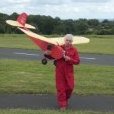
Forum members' new models: Let's see them.
David Davis replied to Paul Marsh's topic in All Things Model Flying
Do you think that big Chinese petrol two-strokes are the major source of noise complaints these days? -
Like the build a lot, Chris. Nice work!
-
Letter from the club owner, LETTRE OUVERTE à M. Le Maire d’Argelès-Mer – “M. le député-maire d’Argelès-sur-Mer Nous venons d’apprendre avec stupeur l’interdiction de la mairie de la tenue de ce qui devait être notre 15ème Meeting Aéromodélisme des 16 et 17 août 2014.Cette décision incompréhensible qui intervient sans aucun préavis, sans aucune informations ni concertation qui plus est 15 jours seulement avant la date de la manifestation, est comprise par l’ensemble des adhérents de l’Espace Modélisme comme un manque de considération et un mépris face au travail accompli depuis tant d’années par ces mêmes bénévoles pour faire de ce meeting ce qu’il est devenu, à savoir l’un des plus attendus sur l’ensemble du territoire. Comment expliquez cette attitude ? La plate-forme modélisme d’Argelès produit chaque année depuis 15 ans 3 manifestations d’envergures et une dizaine de plus petites pour réunir près de 25 0000 visiteurs. Notre association est certainement la plus dynamique de la commune en termes d’animations et nous pensons avoir largement contribué à la notoriété de la commune. Votre argumentation concernant les nuisances sonores liées à ce type de manifestation peuvent être légitimes et entendus mais comment expliquer que face aux 3000 visiteurs qui se regroupent chaque année au mois d’août pour ce meeting, quelques dizaines de plaintes de riverains (et apparemment d’élus de votre conseil…) suffisent à interdire purement et simplement une telle manifestation ? C’est incompréhensible ! Sorry not 10 days before the manifestation but 15, it started with one of the board at the marie getting a noise complaint. The numbers from above above, 15 years of 3 manifestations per year, 25.000 visiters, 3.000 per manifestation. it started here,

